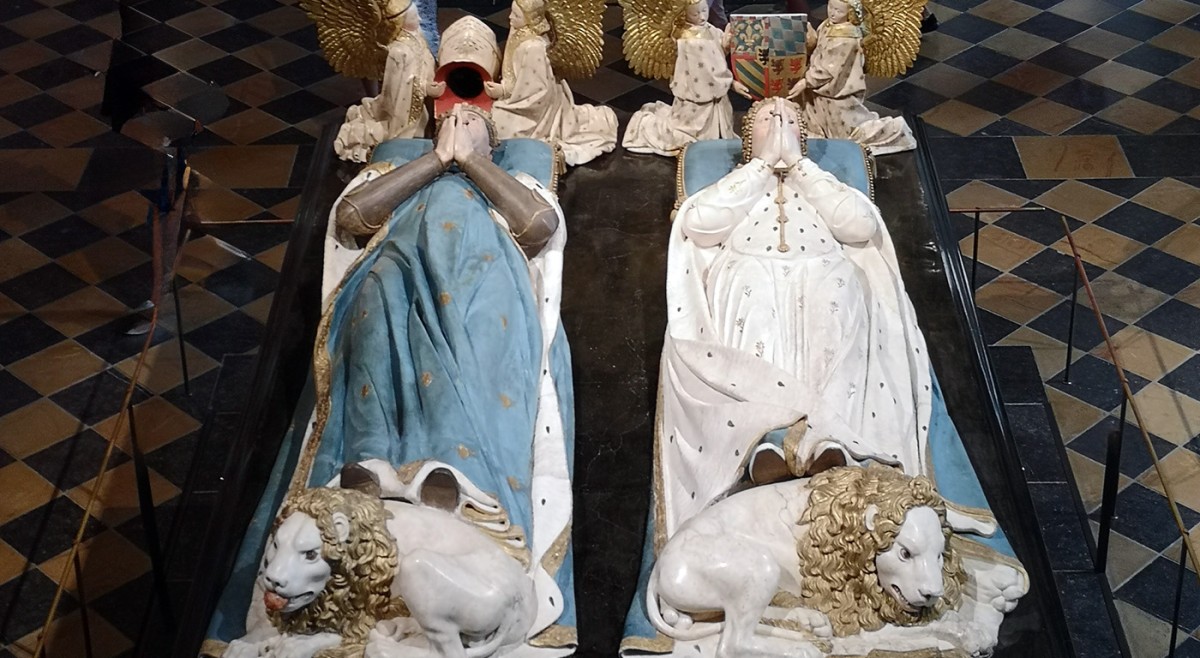The history of the Dukes of Burgundy
The Rise of the Dukes of Burgundy
The Duchy of Burgundy was an important medieval principality that emerged in the early Middle Ages. It belonged to prominent families such as the Bosonids, Robertians, and the royal Capetian dynasty.
In 1363, King John the Good (Jean le Bon) gave duchies to his three younger sons, and Philippe thus became the first Duke of Burgundy of the Valois dynasty. Philip, known as the Bold, was a man of brilliant intellect, renowned for bravery as he fought his first battle at age 14 and a keen matrimonial schemer. He inherited a duchy that mostly corresponded to today's Côte-d'Or, Saône-et-Loire and Yonne départements. After a 40-year reign, the Duke held numerous possessions in Eastern France, including what is today Franche-Comté, and in modern Belgium and the Netherlands. Philip the Bold is the father of what historians call the Burgundian State.
Indeed, Philip's successors, John the Fearless, Philip the Good, and Charles the Bold, all increased the lands of the Duchy through conquests and marriages. At its pinnacle in the 1450s, Burgundy spanned from the Netherlands (Gelderland and Holland) to the South of Burgundy, near the city of Mâcon.
The Duchy was de facto an independent state and became an economic powerhouse in Western Europe. It was also an important artistic, cultural and trading centre.
Despite its large territory and population, not all the lords of Burgundy were loyal and obedient. The dukes' ambition clashed with that of their neighbours, including the Swiss and German princes and the King of France.
In 1470, Charles the Bold faced rebellions in North France and Alsace, which he quelled in blood. Never-ending wars during the following years shook the Duchy, and starting in 1474, Charles had to fight a coalition made of the Swiss cantons, the Duke of Lorraine, and their allies. The King of France, Louis XI, known as the Prudent or sometimes the Spider, backed the Duke's enemies. On the 5th of January 1477, Charles the Bold was killed during the siege of Nancy. It is said that a soldier who did not recognize the Duke broke his skull with a halberd. Charles' body was found naked and devoured by wolves days later.
The Fall of the Dukes
Charles the Bold had no sons to inherit Burgundy. The principality thus became the property of his 19-year-old only daughter, Mary, the most sought-after unmarried woman in Europe. She inherited a weakened state, prone to revolts and rebellions, which she tried to keep for 5 years. A large-scale rebellion in the Low Countries profited the French King, who seized the opportunity to reunite most of the Duchy with the realm. King Louis resorted to intricate legal pretences and bloody military conquests to take hold of the lands. Mary had married the future Holy Roman Emperor Maximilian 1st in 1477. This was another reason for the French conquest of much Burgundian land, as the King could not risk Mary and Maximilian's future son inheriting so many possessions.
An uncommon occurrence, Mary's marriage was happy, albeit short-lived. Despite securing some of her territories, notably in Flanders and Franche-Comté, Mary had lost the great Duchy of her forefathers. She died in 1482, aged 25, after she fell from a horse during a hunt. One of her grandsons was the famous Holy Roman Emperor Charles V. The breakup of the Burgundian State shaped European politics for the following centuries.
List of the Dukes and Duchesses, with their names in French and the dates of their reign:
- Philippe II le Hardi, 1364-1404
- Jean sans Peur, 1404-1419
- Philippe III le Bon, 1419-1467
- Charles le Téméraire, 1467-1477
- Marie de Bourgogne, 1477-1482
